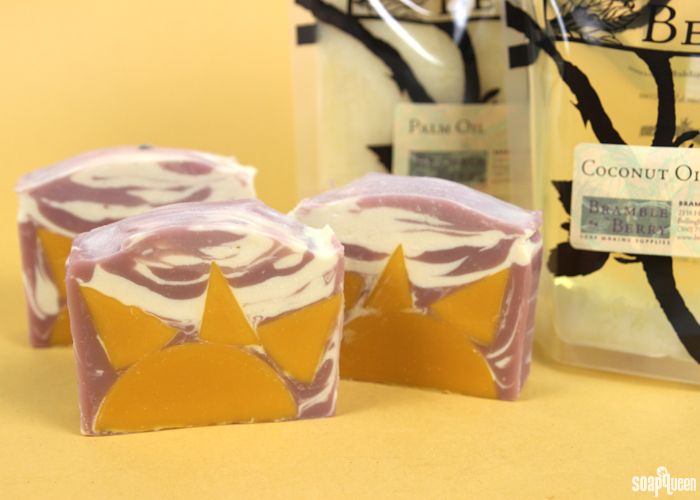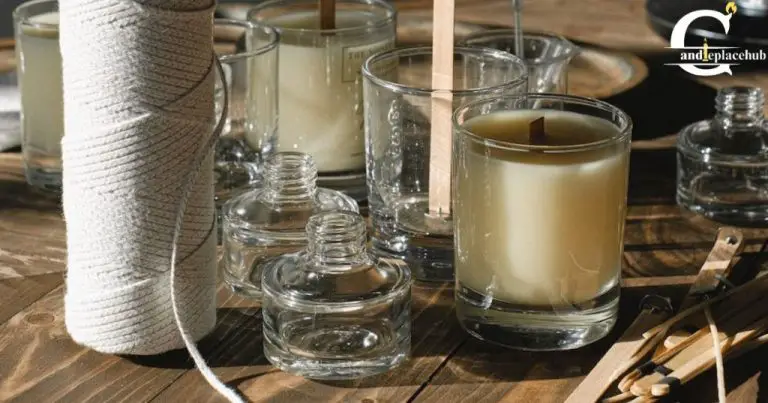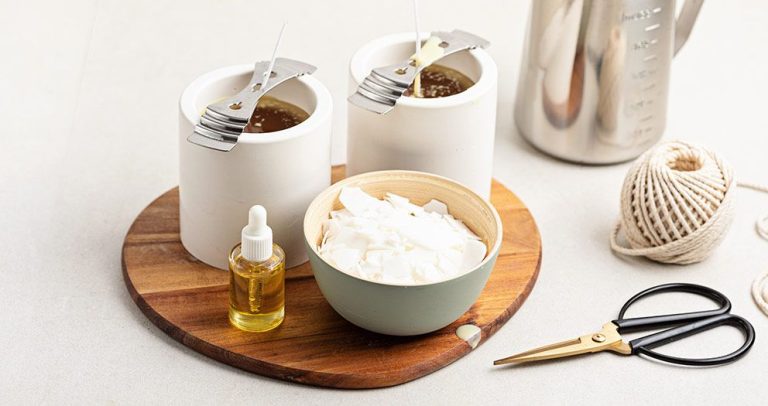How Long Does Whipped Soap Take To Set?
What is Whipped Soap?
Whipped soap is a type of soap that has been aerated to make it light, fluffy, and cream-like in texture. Unlike traditional bar soaps that are hard and dense, whipped soap has a smooth, mousse-like consistency similar to shaving cream or whipped cream (Source: https://www.dosebathco.com/blogs/how-to-use-whipped-soaps-foaming-scrubs/how-to-use-whipped-soaps-foaming-scrubs).
To make whipped soap, regular soap ingredients like oils, lye, and fragrances are blended together and whisked vigorously as it sets to incorporate air into the mixture. Glycerin is also commonly added to help retain moisture and stabilize the air bubbles, giving whipped soap its signature fluffiness. The aeration process differentiates it from a standard bar or liquid soap (Source: https://www.moodysisters.com/blog/2021/6/24/what-is-whipped-soap-and-how-do-i-use-it).
Compared to regular bar soaps, whipped soaps offer several benefits:
- Light, airy texture that produces a rich lather
- Moisturizing effect due to glycerin content
- Easy to scoop and apply to skin or loofah
- Pleasant, indulgent sensory experience
- Often contains skin-nourishing ingredients like oils and butters
- Visually appealing from swirling and peak-like appearance
The light texture and moisturizing qualities make whipped soap a luxurious alternative to traditional soap bars for bathing and showering.
How is Whipped Soap Made?
Whipped soap is made by starting with a soap base and whipping air into it to create a light, fluffy texture. The main ingredients used to make whipped soap are:
- Soap base – This provides the cleansing properties. Common bases used are glycerin soap base, melt and pour soap base, or surfactant-based foaming bath whip base (https://www.candlescience.com/learning/how-to-make-whipped-bath-soap/)
- Water – Added to thin out the soap base so it can be whipped easier.
- Fragrance oils – For scent.
- Colorants – For color.
To make whipped soap, first the soap base is melted down completely. Then water and any colorants or fragrance oils are mixed in. This soap mixture is allowed to cool slightly so it begins to thicken but is still pourable. It is then poured into a stand mixer and whipped on high speed for 5-10 minutes. The whipping process introduces air into the soap, making it increase in volume and have a light, fluffy texture (https://www.candlescience.com/learning/how-to-make-whipped-bath-soap/). When it reaches a thick, mousse-like texture it is ready to be packaged.
What Makes Whipped Soap Light and Airy?
A few key factors give whipped soap its light, fluffy, and airy texture that resembles whipped cream:
Air incorporated during whipping – Whipping introduces air into the soap mixture, creating bubbles that lighten the density. The longer the soap is whipped, the lighter and airier it becomes.
Use of stearic acid – Most whipped soap recipes call for stearic acid, which helps stabilize the air bubbles. The stearic acid molecules line up to form a crystalline structure that holds the air pockets in place. This prevents the bubbles from collapsing and allows the whipped soap to maintain its fluffiness.
(Source)
No hard oils used – Whipped soaps are made without hard oils like palm oil or coconut oil that would cause the soap to solidify into a dense bar. Using only soft oils like olive oil, sweet almond oil and shea butter keeps the soap light and creamy.
(Source)
How Long Does it Take Whipped Soap to Set?
The amount of time whipped soap takes to set depends on the ingredients used in the recipe and environmental factors like temperature and humidity. Typically, whipped soap will set within 24-48 hours.
The main ingredients that impact how quickly whipped soap sets are the soap base, oils, and liquid used. For example, a whipped soap made with a vegetable-based glycerin soap base will set faster than one made with a shea butter-based soap. Using lightweight liquid oils like sweet almond oil versus heavier oils like olive oil also speeds up setting time. Lastly, the amount and type of liquid used impacts cure time. More liquid slows set time. Opting for liquids that evaporate quickly, like witch hazel or aloe juice, makes the whipped soap set faster than using water or floral waters (Source).
Temperature and humidity of the environment also affect how quickly whipped soap cures. Warmer temperatures and lower humidity cause whipped soap to set faster. Storing whipped soap in an area around 70-80°F with 40-60% humidity will result in a 24 hour cure time typically. Cooler temps or higher humidity can double that to 48 hours (Source).

Being patient and allowing whipped soap to fully set before use will result in the lightest, fluffiest final product. Expect whipped soap to take 24-48 hours to completely stabilize in most cases.
Tips for Speeding Up Whipped Soap Setting Time
There are a few tips and tricks you can use to help speed up the setting time for your whipped soap:
Add sodium lactate – Sodium lactate acts as a hardener and helps accelerate trace. Add 1 teaspoon per pound of oils to your lye water. Source: https://www.thesprucecrafts.com/how-to-change-trace-time-517047
Avoid high linoleic oils – Oils high in linoleic acid like grapeseed and sunflower tend to slow trace. Opt for more saturated oils like coconut or palm oil instead.
Freeze in molds – Pour your whipped soap into molds right after mixing, and place them in the freezer for 1-2 hours. The cold temperature will help your soap set up faster. Just make sure your molds are freezer safe!
Whip with cold ingredients – Using chilled oils and lye water can speed up trace time. Whip on a high speed for a shorter time.
Avoid adding extra liquids – Liquids like milks, aloe vera juice, or honey make it harder for whipped soap to set up. Use sparingly or avoid altogether.
Test smaller batches first – Smaller batches will set up faster, so you can test trace time before scaling up.
Signs that Whipped Soap has Set
There are a few clear signs that indicate whipped soap has fully set and is ready to use:
No longer sticky – Whipped soap is very sticky and tacky when first made. As it sets, this stickiness will disappear. The soap should have no tackiness or residue left on your fingers when touched.
Holds shape when removed from mold – Set whipped soap will hold its shape smoothly when unmolded, with no dents or deformities. The peaks should remain peaked.
Surface no longer tacky – The outer surface of the soap should have a smooth, dry texture when set. There should be no tackiness or stickiness on the exterior.
According to experienced soap makers on forums like SoapMakingForum.com, these are the definitive signs that whipped soap has set and hardened completely.
Storing Whipped Soap
Properly storing whipped soap is important for maintaining its light, airy texture and extending its shelf life. Here are some tips for storage:
Store whipped soap in an airtight container. Exposure to air can cause it to lose moisture over time and become hard or crumbly. Putting it in an airtight container like a mason jar or plastic tub with a tight-fitting lid prevents air exposure.
Refrigeration can help extend the shelf life of whipped soap. The cool environment keeps it from melting or softening too quickly. Simply store the closed container in the refrigerator and it can maintain its whipped texture for up to 6 months. Remove portions to use as needed.
To maintain the decorative shape or peaks of whipped soap, store it with plastic wrap pressed directly against the surface. The plastic wrap will keep the shape intact. You can also periodically remix and re-whip stored whipped soap to restore peaks that flattened during storage.
Look for signs of drying or moisture loss over time. If the whipped soap seems to be losing its soft, creamy texture, try remixing in a bit of oil to restore moisture. With proper refrigerated storage in an airtight container, whipped soap can last for many months.
Using Whipped Soap
Using whipped soap is a luxurious experience thanks to its rich, creamy lather. To get the most out of your whipped soap, follow these tips:
Lathering – Scoop out a dollop of whipped soap with your fingers or a spoon. Add a splash of water and rub your hands together to work up a nice foam. The air whipped into the soap makes it easy to lather into a cloud of bubbles. Don’t be shy with the amount you use – the velvety texture feels divine on skin.
Applying – Massage the whipped lather all over your body. You can apply it directly with your hands or use a loofah or sponge. Using your hands allows you to fully experience the silky texture. Using a loofah creates even more bubbles and exfoliates skin.[1]
Rinsing – Whipped soap rinses off clean without leaving behind any residue. Rinse thoroughly with warm water to remove all traces of soap. Your skin will feel soft and nourished.
Benefits of Whipped Soap
Whipped soap offers several benefits that make it a great option for bathing and showering:
Gentle for Sensitive Skin: The process of whipping introduces air into the soap, creating a light and fluffy texture. This makes whipped soap less drying than traditional bar soaps. The gentle formula is ideal for those with sensitive skin or conditions like eczema.
According to The Benefits of Whipped Soap, “Whipped soap is gentle on skin. The oils and butters provide nourishment and moisture for the skin.”
Fun, Light Texture: Whipped soap has an airy, mousse-like texture that makes bathing a more sensory, enjoyable experience. The fluffiness produces a bountiful lather that feels soothing and luxurious on the skin.
Customizable Colors and Scents: An appealing aspect of whipped soap is the ability to customize colors and fragrances. Adding essential oils, clays, botanicals, and micas allows endless possibilities for creating personalized soaps that look and smell amazing.
Conclusion
In summary, whipped soap typically takes 1-3 days to fully set and harden. The exact time can vary based on factors like the recipe, temperature, humidity, container type, and amount of air incorporated. While it may feel firm to the touch within a few hours, whipped soap needs at least 24 hours to complete the saponification process and fully stabilize.
To help your whipped soap set faster, use a recipe with more hard oils, chill it after mixing, pour it into individual containers rather than a large mold, and avoid mixing in too much air. Make sure to store it in a cool, dry area while setting. Test the consistency periodically by gently pressing the surface to check for firmness.
With the right recipe and techniques, you can enjoy lovely light and fluffy whipped soap that sets up nicely within 1-2 days. Taking steps to accelerate the process helps you get to enjoy your creation faster!






